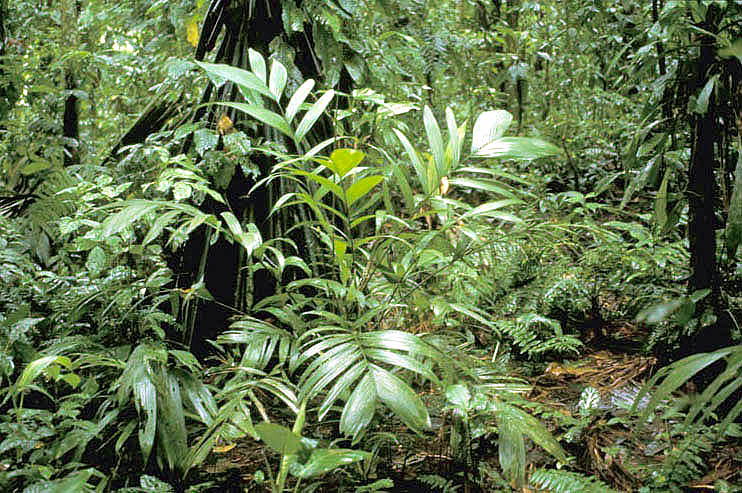Aiphanes eggersii
Burret
Original
reference:
Notizbl. Bot. Gart. Berlin-Dahlem 11: 563 (1932)
Morphology:
Understorey palm. Stems clustered, to 10 m tall and 8 cm in diameter. Leaf blade 120-220 cm long; pinnae 50-65 on each side, narrowly wedge shaped, inserted in groups of 4-14 and spreading in different planes, the central ones 20-45 cm long and 5-10 cm wide, often abrubtly widening and irregularly toothed at apex. Inflorescence 0.7-1.5 m long, with 35-75 branches. Flowers yellow. Fruits ca. 2 cm in diameter, bright red.
Distribution:
Endemic to the dry forest zone in W Ecuador and adjacent NW Peru.
Notes:
Closely related to Aiphanes aculeata, but different in its more numerous, narrower pinnae, and clustered habit.
Conservation
status: Vulnerable
–
IUCN criteria:
A1c, B1, B2c
(Borchsenius & Skov 1999)
Common
names:
Chonta ruro
–
Spanish
(D.M. Pearsall #1070).
Corozo
–
Spanish
(H. Balslev #62012 and additional references).
Uses:
The mesocarp and the endosperm are edible; the endosperm has a taste like coconut
(H.B. Pedersen #104002).
The mesocarp and the endosperm is eaten by local people. The mesocarp may be eaten without preparation. The endocarp is cracked to extract the endosperm which has the taste of a coconut.
(H. Balslev #62012).
|
Latest posts by admin (see all)
- Aluminium Rattan Garden Furniture Design Ideas - September 11, 2019
- Popular Gardens and Parks in Sheffield, United Kingdom - September 18, 2018
- How New Eco-Friendly Garden Benches Help Plants and Consumers in the UK - February 26, 2018




Discussion: